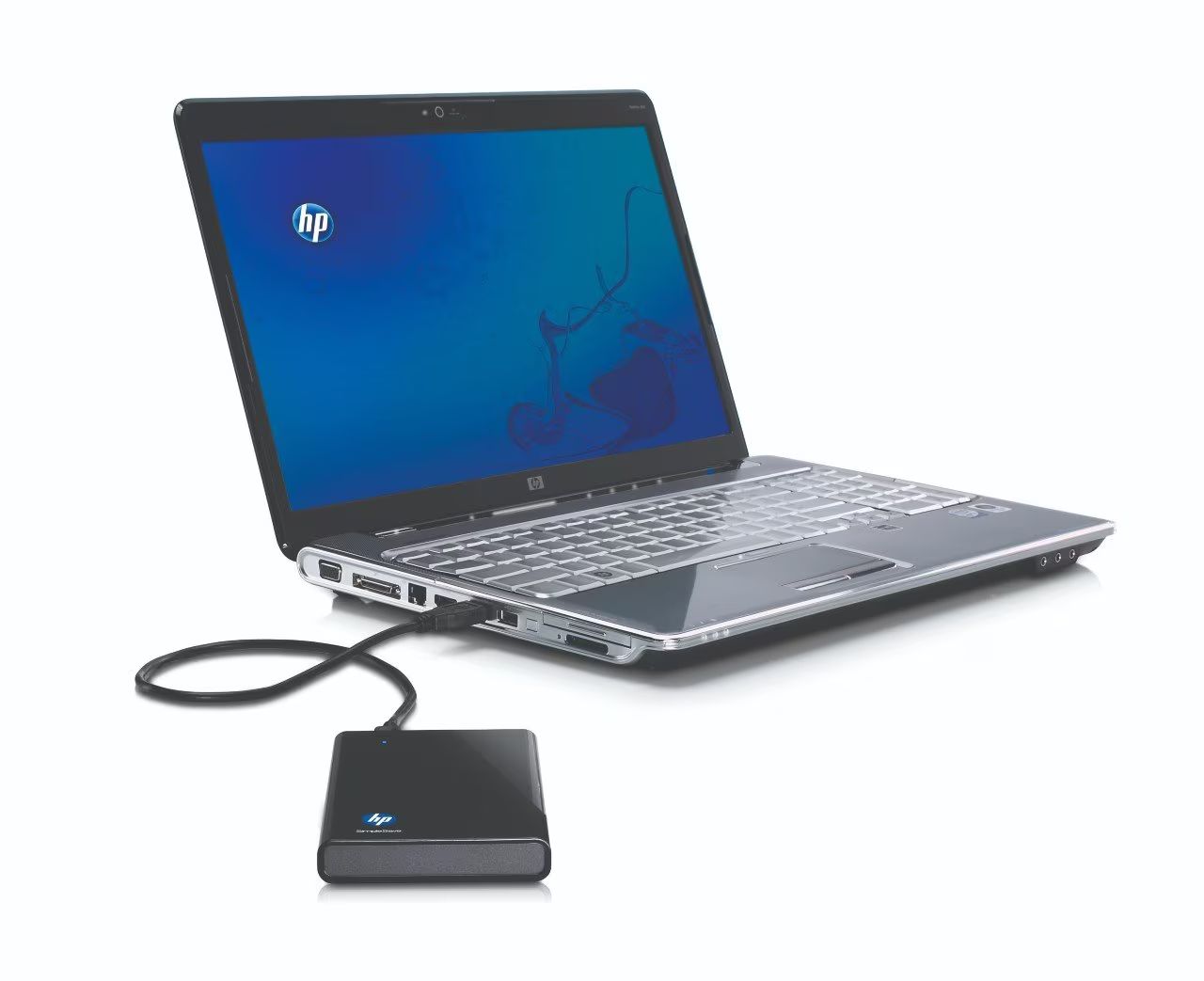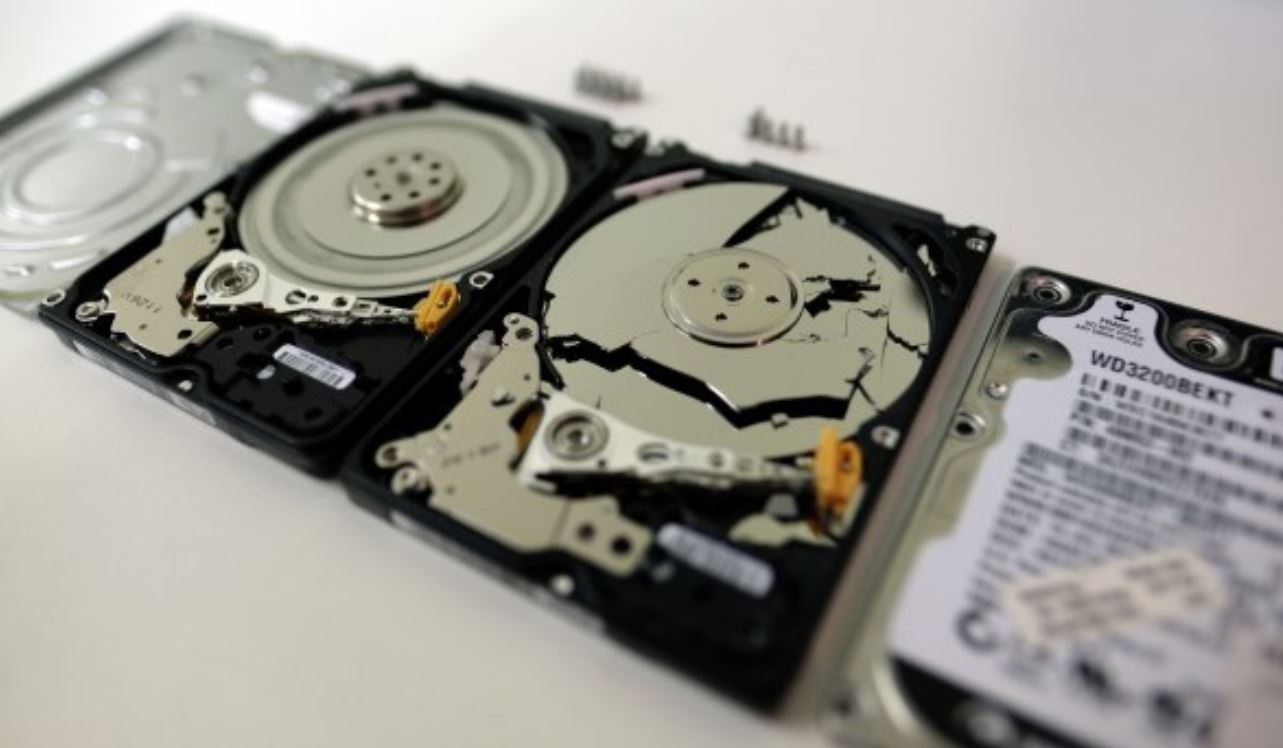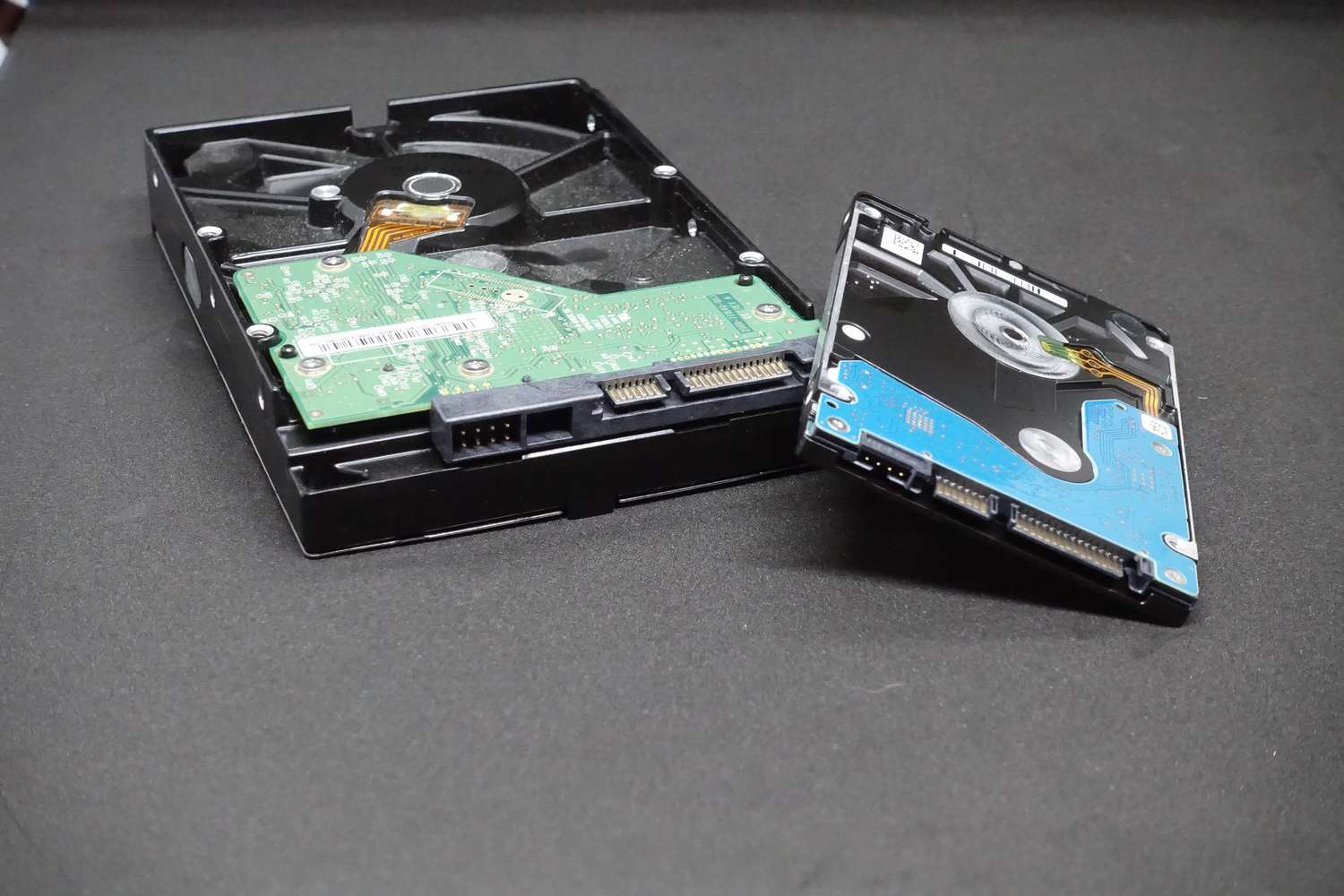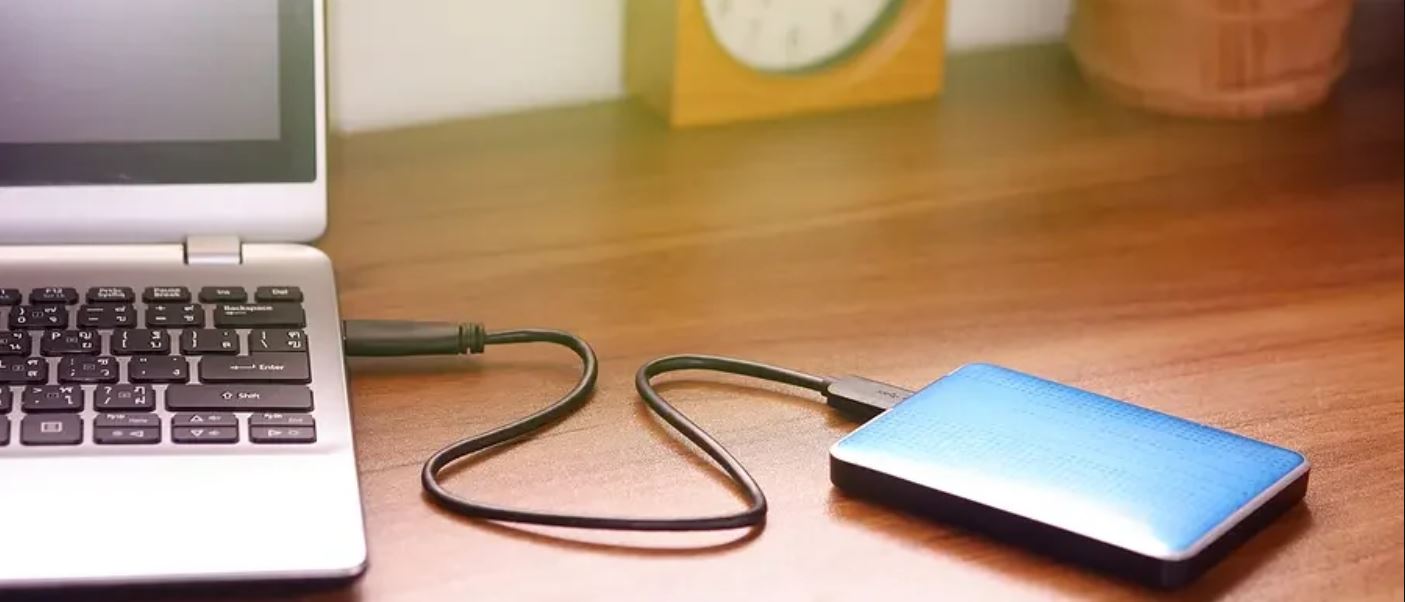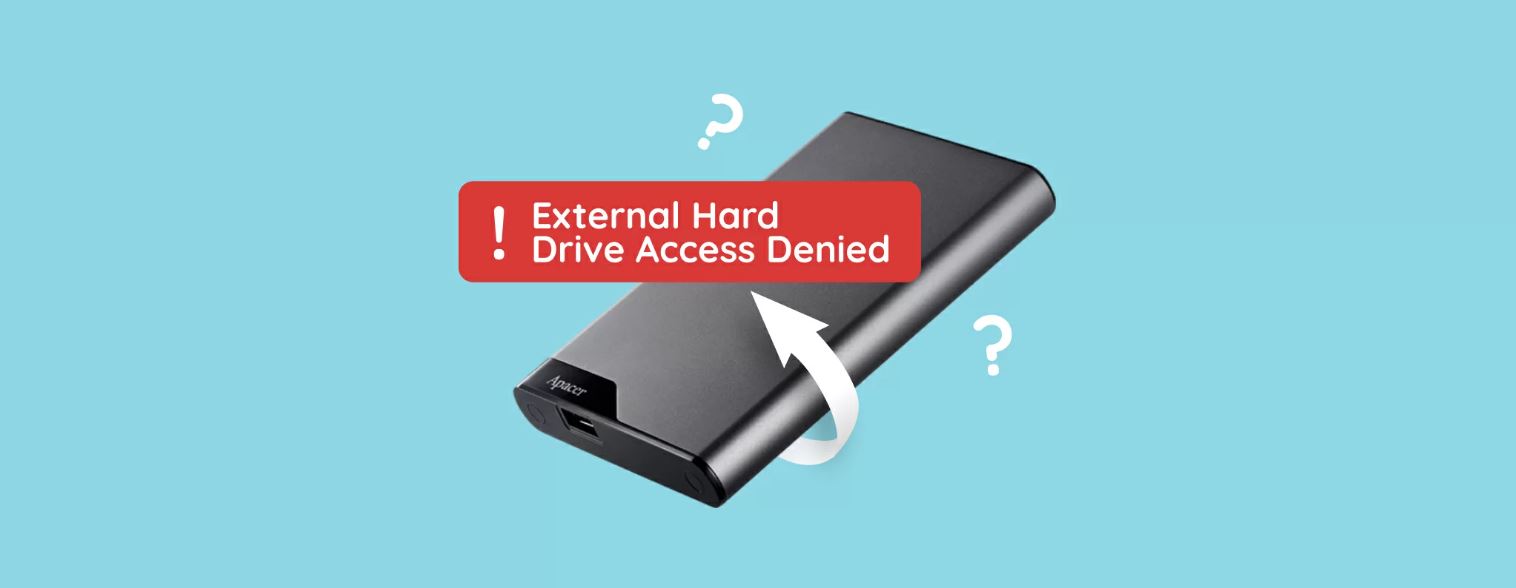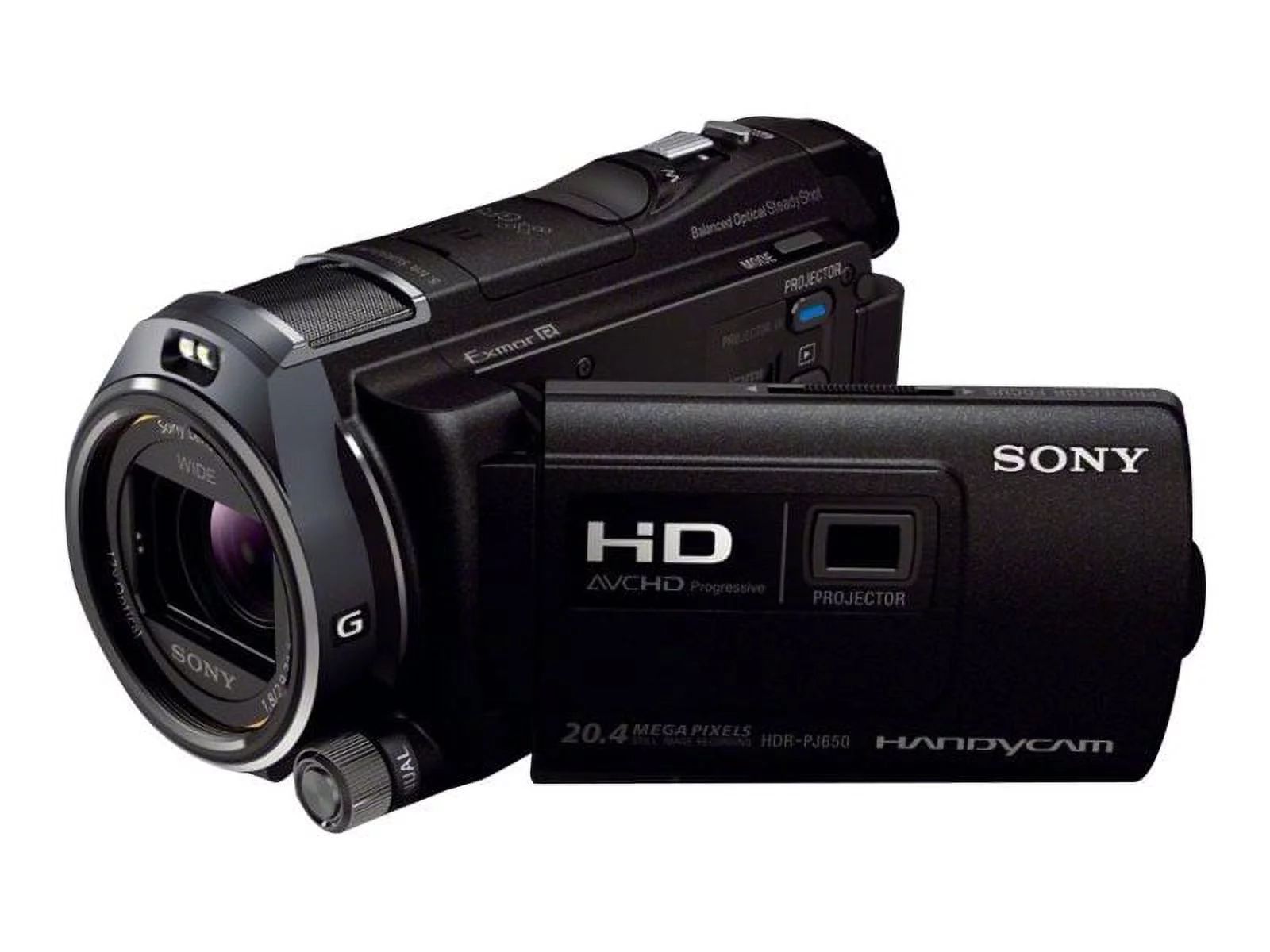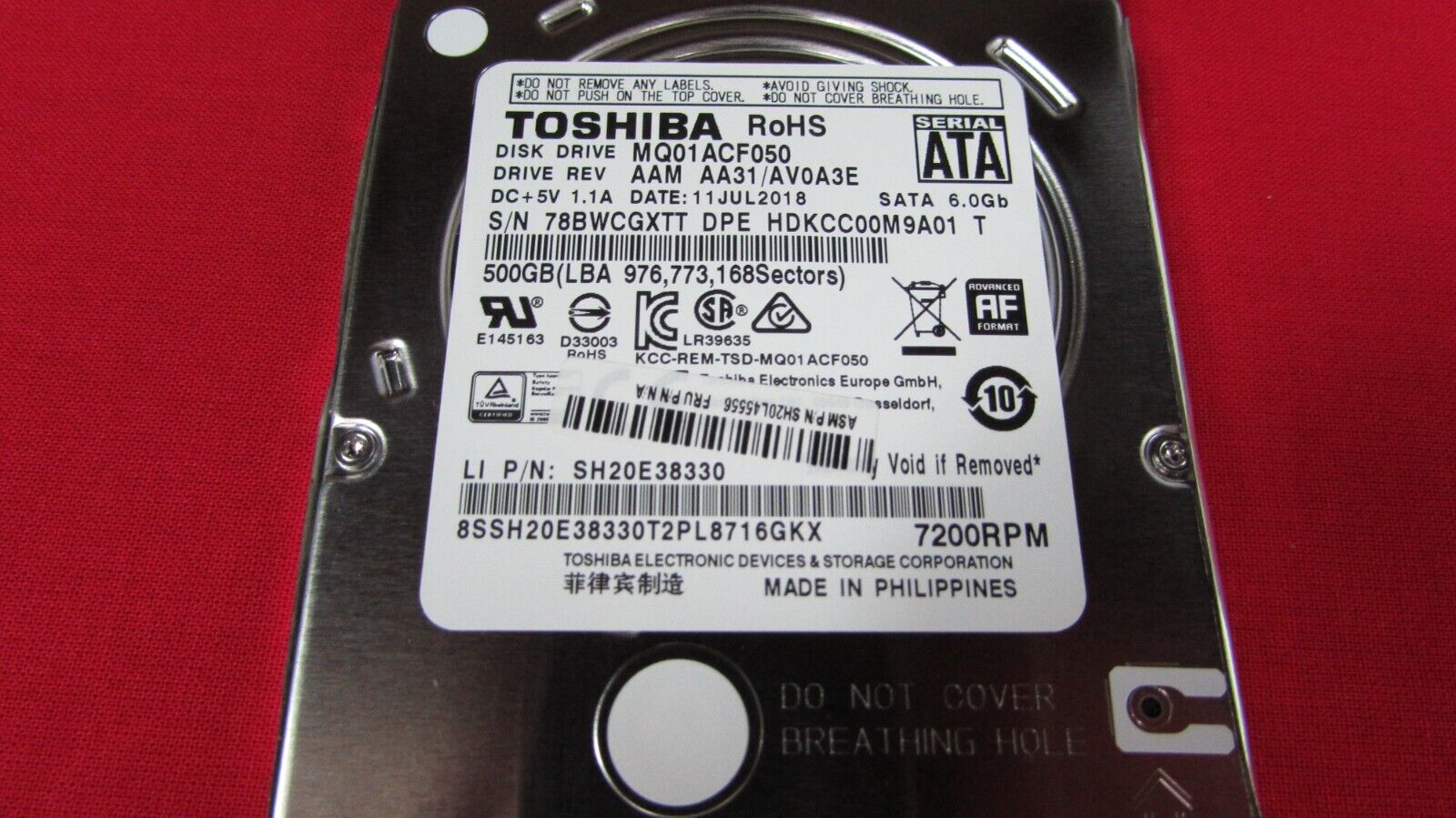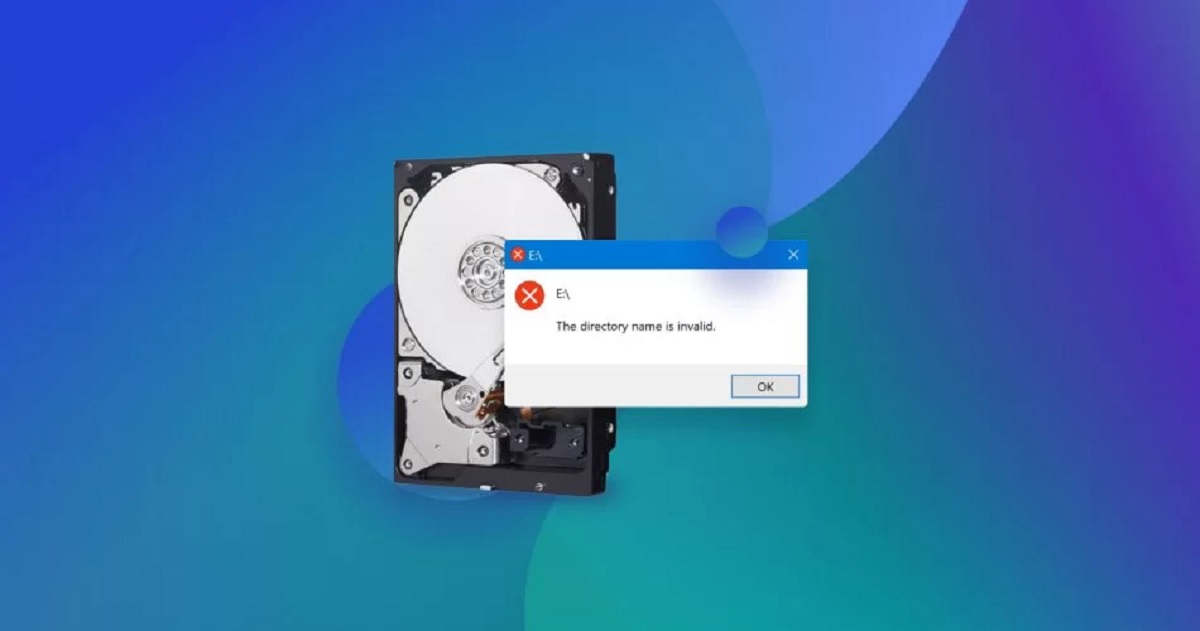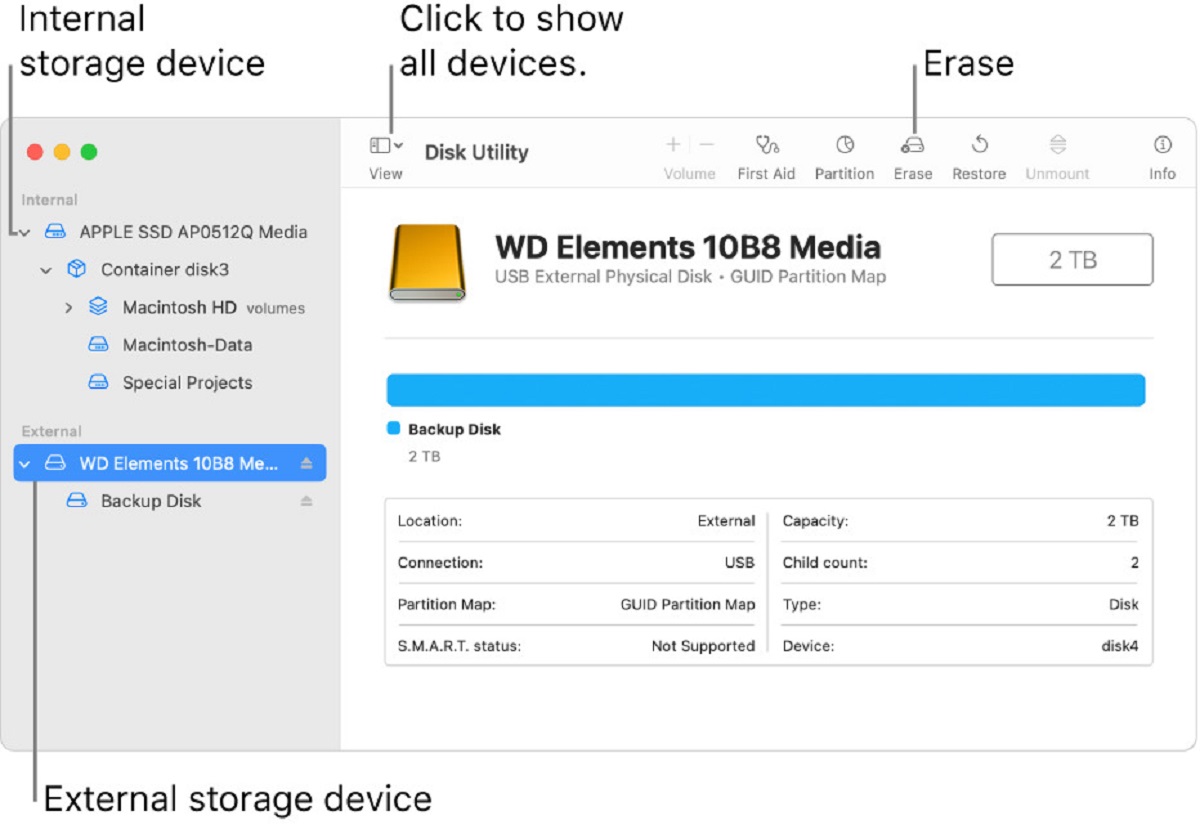Introduction
Welcome to our guide on how to pull data from an unresponsive external hard disk drive. It can be incredibly frustrating when you connect your external hard drive to your computer only to find that it is not responding. This can happen due to a variety of reasons, such as a faulty connection, software issues, or even physical damage to the drive.
In this article, we will provide you with step-by-step instructions on diagnosing the issue and implementing various methods to retrieve your data. Whether you have important work documents, cherished photos, or essential files stored on your unresponsive external hard drive, we are here to help you recover them.
Please note that while the methods we will discuss have proven to be successful in many cases, there is no guarantee that they will work for every situation. Every external hard drive and its issues are unique, so it’s important to exercise caution and make informed decisions when attempting data recovery.
Before we delve into the troubleshooting methods, it’s crucial to emphasize the importance of data backup. In an ideal scenario, you should have regular backups of your important files stored in at least two separate locations. This way, if something goes wrong with the external hard drive, you can rest assured knowing that your data is safe.
However, we understand that accidents happen, and sometimes data loss can catch us off-guard. In such situations, it becomes necessary to try and retrieve the data from the unresponsive drive. Now, let’s move on to diagnosing the issue to determine the best course of action.
Understanding the Problem
When dealing with an unresponsive external hard disk drive, it’s important to understand the potential causes of the issue. This knowledge will help you diagnose the problem correctly and determine the most suitable solution for data recovery.
One common reason for an unresponsive external hard drive is a faulty connection between the drive and the computer. The USB cable or ports may be damaged or loose, preventing proper communication and power transfer. Software issues can also lead to an unresponsive drive, such as outdated drivers, conflicting software, or corrupted file systems.
In some cases, the external hard drive may have suffered physical damage, such as being dropped or exposed to extreme temperatures. Mechanical failures, such as a malfunctioning motor or read/write heads, can render the drive unresponsive as well. It’s important to assess the condition of the drive to determine if physical damage is a contributing factor.
Understanding the underlying cause of the problem will help guide you in choosing the appropriate troubleshooting method. For example, if the issue is related to a faulty cable or connection, there are specific steps you can take to address it. On the other hand, if the drive has physical damage, attempting to fix it yourself may further harm the drive and potentially make data recovery more challenging.
By identifying the problem, you can save time and effort by focusing on the right solution. In the next section, we will guide you through the process of diagnosing the issue and taking necessary precautions before attempting data recovery.
Diagnosing the Issue
Before you can find a solution to your unresponsive external hard disk drive, it’s crucial to accurately diagnose the issue. Proper diagnosis will help you determine the root cause of the problem and guide you in selecting the most effective method for data recovery.
Here are some steps to help you diagnose the issue:
- Check the connections: Ensure that the USB cable is securely connected to both the external hard drive and the computer. A loose or faulty connection can cause the drive to become unresponsive. Try unplugging and re-plugging the cable to ensure a proper connection.
- Observe the device manager: Open the Device Manager on your computer and check if the external hard drive is listed. If it’s listed with an error symbol or is not recognized at all, it indicates a driver-related issue. Right-click on the drive and select “Update driver” to see if that resolves the problem.
- Test on a different computer: Connect the external hard drive to another computer to see if it is recognized and responsive. If it works fine on a different computer, it suggests that the issue may be specific to your computer’s configuration or software.
- Listen for unusual sounds: While your external hard drive is connected, listen carefully for any strange noises, such as clicking, grinding, or buzzing. Unusual sounds often indicate physical damage to the drive, which requires professional assistance for data recovery.
- Perform a visual inspection: Carefully examine the external hard drive for any signs of physical damage, such as dents, scratches, or bent connectors. Physical damage can cause the drive to be unresponsive and may require specialized repair services.
By following these diagnostic steps, you should gain a better understanding of the issue affecting your external hard drive. Once you have identified the likely cause, you’ll be better equipped to implement the appropriate solution for data recovery.
Precautions before Data Recovery
Before embarking on the data recovery process for your unresponsive external hard disk drive, it’s important to take certain precautions to ensure the safety of your data and the well-being of the drive. These precautions will help minimize the risk of further damage and maximize the chances of successful data retrieval.
Here are some precautions to consider:
- Create a backup: If possible, create a backup of your important files from the unresponsive drive to another storage device. This backup will serve as an additional layer of protection in case any complications arise during the data recovery process.
- Use a stable power source: Ensure that your computer and the external hard drive are connected to a stable power source. Power fluctuations or sudden power outages can cause disruptions during data transfer or even damage the drive further.
- Work in a controlled environment: Find a clean and dust-free area to perform the data recovery process. Dust particles and static electricity can harm sensitive components of the drive, so it’s essential to work in a controlled environment.
- Avoid DIY repairs: Unless you have expert knowledge and experience in hard drive repairs, it is highly recommended to avoid attempting any DIY repairs. Opening the drive or manipulating its components without proper expertise can lead to irreversible damage and make data recovery more challenging.
- Consider professional help: If you suspect that the issue with your external hard drive is beyond your capabilities, seeking professional data recovery services is advisable. Professional technicians have the necessary tools and expertise to handle complex cases and increase the chances of successful data retrieval.
By following these precautions, you can minimize the risk of further damage to your unresponsive external hard drive and increase the likelihood of a successful data recovery. Remember, caution and patience are key throughout the process, as rushing or mishandling the drive can lead to permanent data loss.
Method 1: Checking Cable and Connection
One of the most common reasons for an unresponsive external hard disk drive is a faulty cable or connection. Before diving into more complex troubleshooting methods, it’s important to start with the basics and check the integrity of the USB cable and the connection between the drive and the computer.
Here’s a step-by-step guide for checking the cable and connection:
- Inspect the USB cable: Examine the USB cable for any visible signs of damage. Look for frayed or bent connectors, loose or missing pins, or any other abnormalities that may indicate a faulty cable. If you notice any issues, try using a different USB cable.
- Try a different USB port: Disconnect the USB cable from the current port and try connecting it to a different USB port on your computer. Sometimes, a faulty USB port can prevent proper communication between the drive and the computer. Test multiple ports to ensure the issue is not specific to one port.
- Use a USB hub or adapter: If you are using a USB hub or adapter to connect the external hard drive, try bypassing it and connecting the drive directly to a USB port on your computer. Certain hubs or adapters may not provide sufficient power or have compatibility issues, leading to the drive being unresponsive.
- Ensure a secure connection: When connecting the USB cable to the external hard drive and the computer, ensure that it is firmly and securely plugged in. Gently wiggle the connection to confirm that it is not loose. Sometimes, a loose connection can cause intermittent responsiveness or complete disconnection.
- Test on a different computer: Connect the external hard drive to another computer to check if it is recognized and responsive. This test will help determine if the issue lies with the drive itself or the computer you initially connected it to. If the drive works fine on another computer, it confirms that the issue is specific to your computer’s configuration.
By going through these steps, you can rule out any potential cable or connection issues that may be causing your external hard drive to be unresponsive. If the problem persists, it’s time to move on to other troubleshooting methods.
Method 2: Using a Different USB Port
If your external hard disk drive is showing signs of being unresponsive, one simple yet effective troubleshooting method is to try connecting it to a different USB port on your computer. Sometimes, the issue may be due to a faulty USB port, and using a different one can help resolve the problem.
Follow these steps to use a different USB port:
- Disconnect the drive: Safely remove the external hard drive from the current USB port, ensuring that no data transfer or access is ongoing. Eject the drive using the appropriate method specified by your operating system.
- Choose a different USB port: Look for another available USB port on your computer. It’s recommended to use a USB port directly connected to the motherboard rather than one on an external peripheral device or a USB hub.
- Connect the drive: Insert the USB connector of the external hard drive into the chosen USB port on your computer. Ensure that the connection is secure and properly inserted. You should feel a satisfying click when the connection is made.
- Wait for detection: Give your computer a few moments to detect and recognize the external hard drive. The operating system should either auto-detect the drive or prompt you to install the necessary drivers if it’s the first time connecting the drive to that particular port.
- Check for responsiveness: Once the drive is detected, open File Explorer (Windows) or Finder (Mac) to see if the external hard drive appears in the list of connected devices. Try accessing the drive and see if it responds properly. If it does, the previous USB port may have been the cause of the unresponsiveness.
If the external hard drive works fine when connected to a different USB port, it indicates that the previous port may be faulty or experiencing compatibility issues. In such cases, you can continue using the new USB port for the drive. However, if the problem persists even after changing USB ports, proceed to the next troubleshooting method.
Method 3: Trying a Different Computer
If your external hard disk drive remains unresponsive despite trying different USB ports on your computer, it’s worth attempting to connect the drive to a different computer. This method helps determine whether the issue lies with your computer’s configuration or if there is a problem specific to the external hard drive.
Follow these steps to try connecting the drive to a different computer:
- Disconnect the drive: Safely eject the external hard drive from your current computer. Ensure that no data transfer or access is ongoing before disconnecting the drive to prevent any potential data loss or corruption.
- Select another computer: Identify a different computer that you can use for testing. It could be a friend’s computer, a family member’s computer, or even a public computer at a library or internet café.
- Connect the drive: Plug the USB connector of the external hard drive into an available USB port on the second computer. Ensure that the connection is secure and properly inserted.
- Wait for detection: Give the second computer a few moments to recognize and detect the external hard drive. The operating system should either auto-detect the drive or prompt you to install the necessary drivers if it’s the first time connecting the drive to that particular computer.
- Check for responsiveness: Once the drive is detected, open File Explorer (Windows) or Finder (Mac) on the second computer to see if the external hard drive appears. Try accessing the drive and see if it responds properly. If it does, it indicates that the original computer may have compatibility issues or a configuration problem.
If the external hard drive works fine when connected to a different computer, it suggests that the issue is not with the drive itself, but rather with your original computer. In such cases, you can focus on troubleshooting the computer’s USB ports, drivers, or any other software-related factors that may be affecting the drive’s functionality.
However, if the drive remains unresponsive even when connected to a different computer, it indicates a potential problem with the drive itself. In such situations, you may need to explore other data recovery methods or consider seeking professional help to retrieve your data.
Method 4: Using Data Recovery Software
If your external hard disk drive is still unresponsive after trying different USB ports and connecting it to a different computer, you can attempt to recover the data using data recovery software. These software tools are designed to scan and retrieve data from inaccessible or damaged drives, providing a potential solution for recovering your important files.
Follow these steps to use data recovery software:
- Research and select reliable software: Look for reputable data recovery software that is compatible with your computer’s operating system. Read reviews and choose one that has a proven track record of successful data retrieval from unresponsive drives.
- Download and install the software: Visit the official website of the data recovery software and download the installation file. Follow the on-screen instructions to install the software on your computer.
- Connect the unresponsive drive: Plug the problematic external hard drive into a working USB port on your computer. Ensure that the connection is secure and properly inserted.
- Launch the data recovery software: Open the data recovery software that you installed earlier. The software should provide a user-friendly interface with options to scan for and recover lost files.
- Select the unresponsive drive: Within the data recovery software, choose the unresponsive external hard drive as the target for the recovery process. The software will typically detect the connected drives and display them for selection.
- Scan for lost data: Start the scanning process within the data recovery software. The software will analyze the drive and search for any recoverable files, even if the drive is unresponsive. The duration of the scan will depend on the size and condition of the drive.
- Preview and recover the data: Once the scan is complete, the software will display a list of recoverable files. Preview the files to ensure their integrity and select the ones you want to recover. Choose a safe location on your computer or another storage device to save the recovered data.
Using data recovery software can help you retrieve your valuable files from an unresponsive external hard drive. However, keep in mind that the success of the recovery process depends on the extent of damage to the drive and the effectiveness of the software. If this method does not yield satisfactory results, you may need to consider professional data recovery services as your next step.
Method 5: Opening the External Hard Disk Drive
If all previous methods have failed to revive your unresponsive external hard disk drive, you can consider the option of opening the drive. Please note that this method should only be pursued as a last resort and requires careful handling as it may void any warranty and risk further damage to the drive. If the data on the drive is highly valuable or sensitive, it’s recommended to consult a professional data recovery service before attempting this method.
Follow these steps to open the external hard disk drive:
- Gather the necessary tools: Before proceeding, make sure you have the appropriate tools for the task. This typically includes a set of small screwdrivers, such as Phillips and Torx, and an anti-static wrist strap to protect the drive from electrostatic discharge.
- Ground yourself: To prevent static electricity from damaging the drive, ground yourself by wearing an anti-static wrist strap or by touching a grounded metal object before handling the drive.
- Locate and remove the screws: Look for the small screws that secure the enclosure of the external hard drive. These screws are usually located on the sides or bottom of the drive. Carefully remove the screws using the appropriate screwdriver.
- Separate the enclosure: Gently pry open the enclosure of the external hard drive using a plastic tool or your fingers. Be cautious not to apply excessive force and avoid damaging the internal components of the drive during this step.
- Inspect and assess the drive: Once the enclosure is open, examine the internal components of the drive. Look for any obvious signs of physical damage, such as loose cables, broken connectors, or damaged circuit boards. Take note of any findings that may be relevant for data recovery attempts.
- Connect the drive externally: If you have the necessary tools and expertise, you can attempt to connect the internal hard drive externally using a compatible hard drive docking station or adapter. This allows you to bypass any issues with the original enclosure and retrieve the data from the drive.
- Proceed with caution: While attempting to open the external hard disk drive can be a viable option for data recovery, it carries inherent risks. If you are uncertain or uncomfortable with the process, it is strongly advised to seek professional assistance to prevent further damage to the drive and increase the chances of successful data retrieval.
Opening the external hard disk drive is a delicate task that should only be undertaken by individuals with experience and knowledge of hard drive internals. If you do not feel confident in your abilities or if the data on the drive is critical, it is recommended to consult a professional data recovery service instead.
Conclusion
Dealing with an unresponsive external hard disk drive can be a challenging and frustrating experience. However, there are several methods you can try to retrieve your valuable data. Throughout this guide, we have outlined various troubleshooting techniques, including checking the cable and connection, using different USB ports, trying a different computer, utilizing data recovery software, and even opening the external hard drive as a last resort.
It’s important to note that there is no guaranteed solution that will work for every situation. The success of data recovery depends on the specific circumstances and extent of damage to the drive. Therefore, it’s essential to exercise caution, make informed decisions, and consider the value and sensitivity of the data before attempting any of the outlined methods.
Additionally, we highly recommend implementing regular data backups to minimize the risk of data loss. Keeping copies of your important files stored in multiple locations ensures that even if your external hard drive becomes unresponsive, your data remains safe and accessible.
If you are uncomfortable or unsure about troubleshooting or opening the drive yourself, it’s advisable to seek professional assistance from data recovery specialists. They have the expertise and specialized tools to handle complex cases and maximize the chances of successful data retrieval.
Remember to stay patient throughout the process, as data recovery can be time-consuming and unpredictable. It’s crucial to approach the situation with a calm and composed mindset to make the best decisions for your data and the health of the external hard drive.
We hope that this guide has provided you with valuable insights and options for retrieving your data from an unresponsive external hard disk drive. Good luck with your data recovery efforts!







